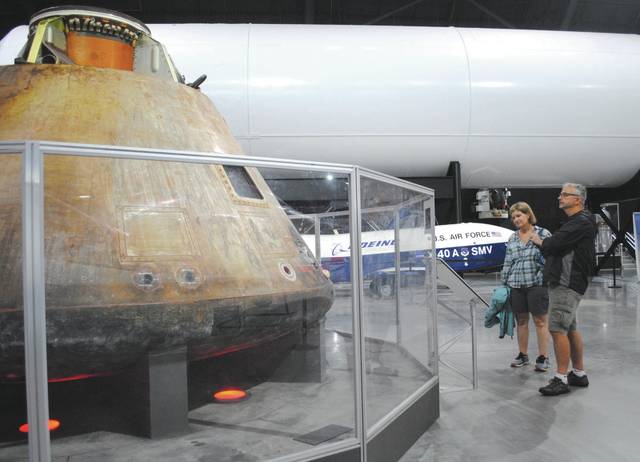
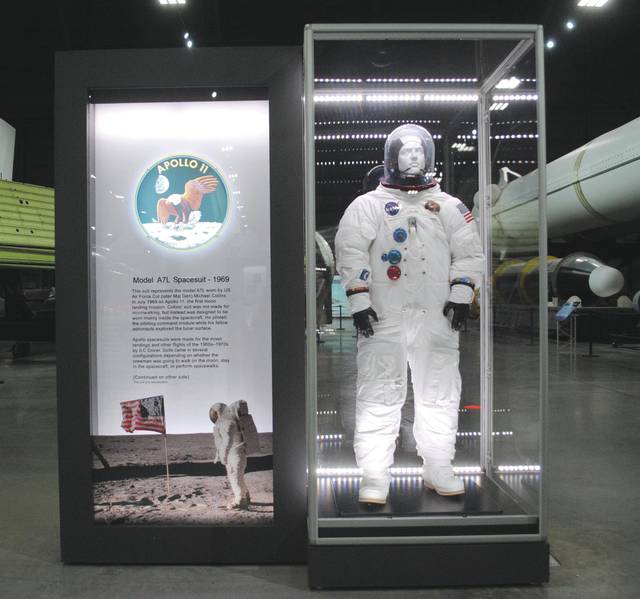
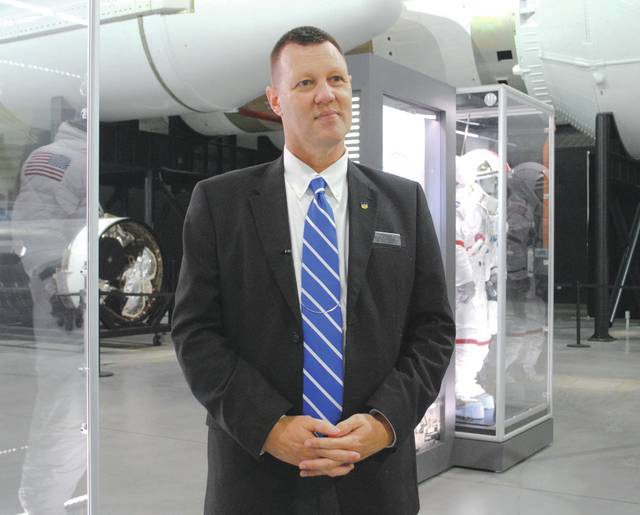
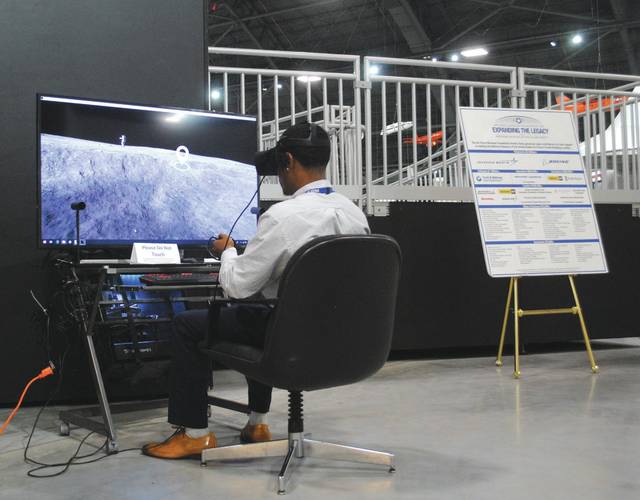
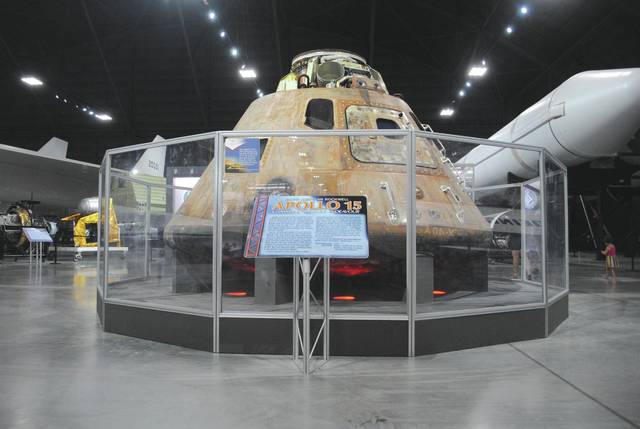
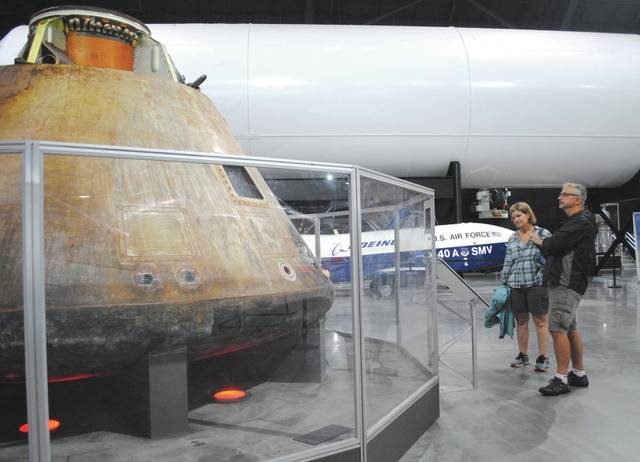
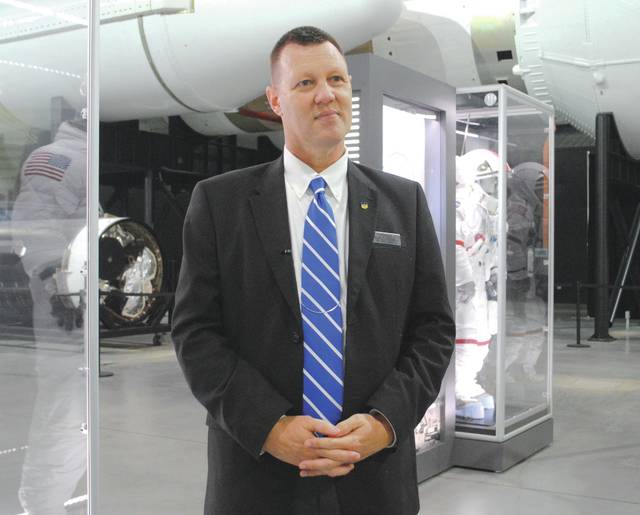
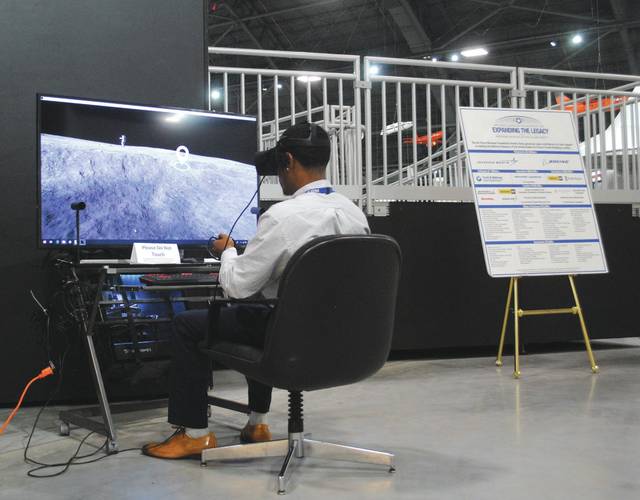
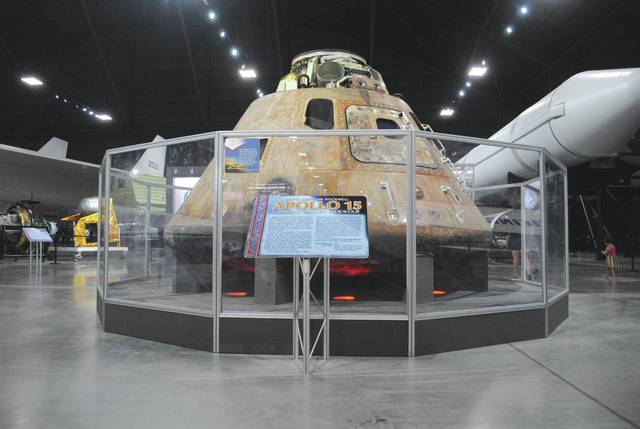
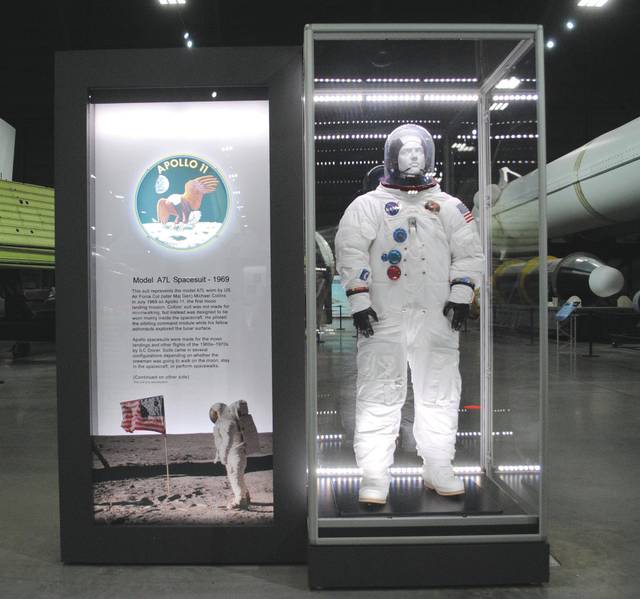
WRIGHT-PATTERSON AIR FORCE BASE — When Neil Armstrong took the first steps on the moon, he said “that’s one small step for man, one giant leap for mankind.”
And it was. The Apollo 11 spaceflight landed on the moon on July 20, 1969 — 50 years ago today — marking the first time humans had ever stepped on a surface that wasn’t the Earth.
“The Apollo 11 … was all about taking humans to the moon and returning them safely to the Earth,” National Museum of the United States Air Force Curator and Historian Doug Lantry said. “… We’ve been dreaming of going to the moon for thousands of years. There is art and poetry of people looking up and dreaming of going to the moon and in the 1960s — we actually did it.”
President John F. Kennedy said in 1961 that it was a goal of the nation to send a man to space and safely return him back to Earth, but the sense of urgency was fueled by the geopolitical climate of the Cold War, particularly following the Soviet Union’s launch of Sputnik1.
“There was a satellite flying over our country … and someone else launched it,” Lantry said. “ … We had to get there first to prove that our way of doing things in the west was a better way to manage a society.”
Thus, the space race had commenced.
The Apollo 11 mission included approximately 400,000 government and contract workers dedicated to the project. Lantry said every person and company working on the project had to be perfectly coordinated, otherwise it wouldn’t work. Just like the domino effect — if one company’s part didn’t work correctly, the next company’s part would not work correctly either.
“It’s a great story of perseverance and courage,” Lantry said. “World-wide, it was a big deal. It had never been done.”
Apollo 11 launched on July 16, 1969 and landed on the moon just four days later.
NASA has since conducted six crewed moon landings, launching 12 Americans onto the surface, Lantry said. They are the only human beings to ever walk on the moon.
“One-hundred years ago, it was hard to imagine this,” Lantry said. “One-hundred years from now, what will be be looking at? Humans will always have the urge to explore.”






